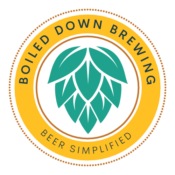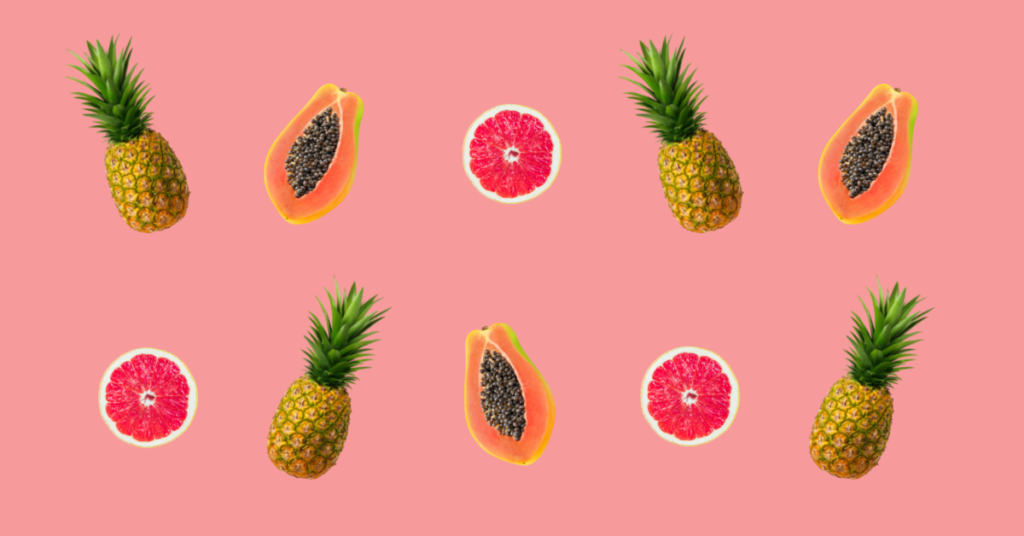American craft beers are well-known for their bold flavor and aroma profiles. Many popular American beer styles, particularly Juicy or Hazy IPA, focus on juicy, fruity aromas derived from hops. Volatile thiols make up a tiny portion of the total weight of hops but can bring massive tropical, citrus, and other fruity aromas to beers.
Table of Contents
Boiled Down Summary
- Thiols are organic compounds with a thiol functional group, a sulfur atom bound to a hydrogen atom (-SH). Hop-related thiols are polyfunctional thiols, meaning these compounds have other functional groups in addition to the thiol functional group.
- Hop thiols can provide tropical, citrus, and other fruit aromas with concentrations as low as 1.5 ng/L.
- Hops have two forms of thiols that matter to brewers:
- free thiols, which are already in an aroma-active form, and
- bound thiol precursors, which are not aroma-active but can release a volatile thiol that is aroma active.
- Citra, Mosaic, Sorachi Ace, and Hallertau Blanc are some hops known to have high levels of free thiols
- Cascade and Nelson Sauvin are known to have high levels of bound thiol precursors.
- Brewers can use biotransformation in fermentation, specifically β-lyase expressed by yeast, to release bound thiol precursors to volatile thiols that impact aroma.
What are thiols?
Thiols are organic compounds that contain a functional group with a sulfur atom bound to a hydrogen atom (-SH), called a thiol group. Some thiol compounds also have other functional groups and are called polyfunctional thiols. The diagram below shows the thiol functional group as well as an example of 4MMP, a polyfunctional thiol found in some beers.

To learn more about functional groups, watch this video from Khan Academy that offers a quick primer on the topic.
Thiols and beer aroma
Today, many of the most popular beer styles in the United States, such as Hazy IPA, have bold, fruity aromas. Due to a very low perception threshold, volatile thiols can greatly influence hop aroma in low concentrations. Some volatile thiols provide exotic fruit, citrus, or black currant aromas at concentrations as low as 1.5 ng/L (Svedlund et al., 2022).
The thiols from hops are present in two primary forms that matter to brewers: free thiols and bound precursor thiols.
Free thiols
Free volatile thiols are present in hops in a form where they are already aroma active. Some examples of free thiols from hops are 3-mercaptohexan-1-ol (4MH), 4-mercapto-4-methyl-2-pentanone (4MMP), and 3-mercaptohexyl acetate (4MHA) (Krogerus et al., 2022). The diagram below shows the structure of these three thiols and common flavor descriptors.

Hop thiol content varies significantly between hop varieties. Some varieties like Citra and Mosaic have high amounts of free thiols, while others have limited free thiols (Molitor et al., 2022).
Schönberger and Dagan (2020) examined the free thiol content of various hops varietals grown in multiple locations and found that Sabro, Citra, and Mosaic hops had high levels of free thiols. The group also cited other studies that showed high levels of free thiols in Citra, Mosaic, and Sabro, but also Hallertau Blanc and Sorachi Ace, which were not included in their study. In all studies cited within Schönberger and Dagan’s presentation, the level of free thiols for all hop varieties was around 100 ng per gram of hops or less.
While the free thiols in hops can develop fruity thiol-based aromas in beers, there is a much larger potential source of thiols in bound thiols.
Bound Thiols
Bound thiols are thiols conjugated in a form that renders them aroma-inactive. However, in hops, there can be much higher concentrations of bound thiols than free thiols.
Schönberger and Dagan (2020), in the previously referenced study, examined the bound 3MH precursors in multiple hop varieties. They found that, for instance, Cascade had up to 20,000 – 25,000 ng/g of 3MH precursor, which is on the scale of 1000 times more than the free thiol level in Cascade.
A study from Gros et al. (2013) focused on releasing S-cysteine conjugated thiols from hops using a commercial β-lyase. The group tested Saaz, Cascade, Nelson Sauvin, and Tomahawk hop varieties, which all had low free thiol content, and found that all varieties released volatile thiols to a level greater than 300 µg/kg hops. Cascade released the most 3-sulphanylhexan-1-ol (3SHol, also called 3MH) at 1641 µg/kg hops.
Due to the high concentration of volatile thiol precursors in hops, there is tremendous aroma potential if the thiols can be released.
Releasing bound thiols in the brewing process
The core tool brewers have for releasing bound thiols is biotransformation, a term that describes many different flavor-releasing reactions in beer fermentation (Svedlund et al., 2022). While there are many reactions involved in biotransformation, the focus for releasing bound thiols involves the enzyme β-lyase, which converts non-aroma active thiol precursors into volatile thiols by releasing the thiols.
Many brewing yeasts have a gene, IRC7, that encodes for the β-lyase enzyme, but it is typically limited in its ability to convert thiol precursors into volatile thiols (Molitor et al., 2022). Krogerus et al. (2022) and Molitor et al. (2022) have both demonstrated the ability to produce hybrid or genetically modified yeast strains that are more capable of releasing bound thiols.
Omega Yeast has a series of commercially available “thiolized” yeasts designed to release bound thiols through improved β-lyase expression.
Beyond hops, brewers are also looking at other sources of bound thiols that can be released in biotransformation. One product containing thiol precursors, Phantasm, is made from New Zealand Sauvignon Blanc grape skins. Northern Brewer, a homebrew supplier, shares an overview of Phantasm Thiol Powder as well as some resources on how to use it in combination with an Omega Yeast thiolized yeast strain.
Other thiols in brewing
While this article focuses on positive aroma impact, hop-derived thiols, there are other thiols in beer. One well-known thiol is 3-methyl-2-butene-1-thiol (MBT), which causes an off-aroma in beer called “lightstruck,” or sometimes casually skunky or skunked beer. This article on MBT in beer goes into more detail on what causes skunky beer.
References
Gros, J., Thu Hang Tran, T. T. H., & Collin, S. (2013). Enzymatic release of odourant polyfunctional thiols from cysteine conjugates in hop. Journal of the Institute of Brewing, 119(4), 221-227. https://doi.org/10.1002/jib.80
Heelan, A. (2015). Sulfur containing compounds have high aroma impact, including key varietal flavors. Waterhouse Lab – UC Davis. https://waterhouse.ucdavis.edu/whats-in-wine/volatile-thiols
Holt, S., Miks, M. H., Trindade de Carvalho, B., Foulquie-Moreno, M. R., & Thevelein, J. M. (2019). The molecular biology of fruity and floral aromas in beer and other alcoholic beverages. FEMS Microbiology Reviews, 43(3), 193-222. https://doi.org/10.1093/femsre/fuy041
Krogerus, K., Rettberg, N., & Gibson, B. (2022). Increased volatile thiol release during beer fermentation using constructed interspecies yeast hybrids. European Food Research and Technology. https://doi.org/10.1007/s00217-022-04132-6
Molitor, R. W., Roop, J. I., Denby, C. M., Depew, C. J., Liu, D. S., Stadulis, S. E., & Shellhammer, T. H. (2022). The Sensorial and Chemical Changes in Beer Brewed with Yeast Genetically Modified to Release Polyfunctional Thiols from Malt and Hops. Fermentation, 8(8). https://doi.org/10.3390/fermentation8080370
Schönberger, C., & Dagen, L. (2020). Development of Thiols and Thiol Precursors in Different Hop Varieties During Hop Harvest and their Impact on Beer Flavor[Conference Presentation].https://www.brewersassociation.org/wp-content/uploads/2020/05/CBC-Online-Seminar-Presentation-Development-of-Thiols-and-Thiol-Precursors-in-Different-Hop-Varieties.pdf
Svedlund, N., Evering, S., & Krogerus, K. (2022). Fruits of their labour: biotransformation reactions of yeasts during brewery fermentation. Applied Microbiology and Biotechnology, 106, 4929-4944. https://doi.org/10.1007/s00253-022-12068-w

